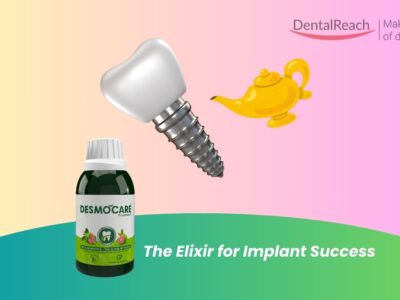People do not remember what you said, but how you made them feel.
What is Neuromarketing?
Neuromarketing is an effective way that helps to convey the necessary information, taking into account the psychological characteristics of customers, and as a result, to obtain better understanding. Once you understand the psychology of the consumer-patient, dealing with them becomes breezy, marketing your services becomes a piece of cake and your dental practice becomes stress-free!

Neuromarketing is purely psychology-based. By understanding the process of emotional reactions, dental clinics can very efficiently influence all five organs of the senses using positive stimuli.

It can be smells (such as perfumes), sounds (such as music), colors (such as red), methods of demonstrating services (such as demonstrations) and other methods that have an impact on client activity (such as advertising) and, as a result of that, on the effectiveness of selling clinic services.
Our senses are divided into groups -audio, visuals, kinesthetics, etc. It depends on what kind of sensory organ is dominant in the process of analysis, and which of them prevails.

Neuromarketing studies have shown that the presentation of a product (or service) in an emotional way generates greater neural activity in the brains of clients than when they receive the usual presentation. Emotional stimuli are accepted better than logical ones.
Consumers will be more interested in receiving offers with a positive emotional appeal than with a negative one.
This increases the chances of the client purchasing the service offered to him and returning to this clinic again.
Some people experience certain emotions that cause their brains to act.
When a person is in a state of neural activity (i.e., when they’re shopping), they are much more likely to buy things.
The main task is simply to achieve that!
How can one influence patients’ senses?
Of course, people feel strongly about their opinions because they’re emotionally invested in them.

In a study: before entering a clinic, patients were given a large picture with a bright positive message hanging above them.
Attendance doubled, and sales increased by 25%.
Then the photo was removed, and everything returned to normal.
Isn’t this an example of boosting positive feelings among visitors?
Gender-based marketing (using harmless gender stereotypes for marketing)
Photographs are usually used in reception areas to attract the target audience, but they’re not always necessary.
It’s a powerful feeling, because it’s associated with happiness, security, and joy.
Click here to download FREE clinic posters
Such bursts of emotions between the representatives of the beautiful part of humanity cause a positive impact!
If the bulk of the clients are women, then photos of happy smiling children will serve as a wonderful emotional impulse.
How does the male brain respond to marketing stimuli?
This is where the masculine energy comes into play.
After all, these factors play a decisive role in fulfilling the biological purpose of man.
And if women tend to be more empathetic, sociable, and safe, then for men – alpha dominance, that is, everything related to erotica, sex and superiority.
Color psychology (using colours to influence patients)
You can improve the overall mood and well-being for consumers by using lighting that is pleasing to the eye, an overview of the lighting and colors, the right temperature conditions, smells, and color combinations.
The more senses are used to create an emotional response in the client, the better.
We each have our own unique code, which we use to express ourselves.

Each color has an emotional effect on us – different colors affect our moods and thoughts.
Color psychology helps you create comfortable conditions for negotiating. It increases employee productivity and increases client activity in the clinic too.
We see millions of different colors, and colors are perceived by our eyes even when they’re not seen.
We don’t just see the color, we feel it.
Psychologists says, 80% of the colors we see are “absorbed” by the nervous system and only 20% are vision.
The mood and atmosphere inside the building largely depend on which color scheme (warm or cool) is chosen for its decor.

Warm colors (shade of red, orange and yellows) carry energy and stimulate. So they’re used to “warm up”, or energize, customers and increase efficiency in offices.
Cold colors (shades of blues, blue and violets) cause people to become less active, slower, and more relaxed.
CASE STUDY: Scientists have conducted a number of experiments to confirm the efficacy of neuromarketing.
The participants were shown the same products, but each time presented against a background with a positive emotional coloring and against a background with a negative emotional coloring. The results showed that those who saw the product against a positive background showed greater sympathy for the products and willingness to buy them, than those who saw the product presented against a negative background.
Visualization is an effective way to sell dental services.
One good way to show off your before and after photos is to post them on your website and share them with your patients.
Nothing impresses them more than this – offer your best work to them on a platter.

Product selling to the patient
Some dentists sell or have someone employed to sell a few basic products in-house for the comfort of the patient. If you are one of them, make sure you have the necessary permissions in place.
During a professional demonstration of a new product, the patient needs the conditions to be set up so that they can experience the results. Keep such trials in mind.
Toothpaste, mouthwash, floss, toothbrush, etc. are often sold together in packages and look more neat if it is done so.
You need to pay particular attention to the state of the air and the smell in the clinic.
The presence in the dentist’s office of a ventilation and air conditioner system together with the use aromatherapy methods gives a good result.

Unlike true essential oils which provide an antiseptic effect, the use of deoderizing and aromatic substances does NOT give the corresponding antiseptical effect and can cause various allergies both for clinic visitors and for staff.
The best musical choices
for both patients and employees at dental practices include:
- Classical or instrumental music that is slow and steady.
- Music with lower decibel levels.
- Songs that help patients or employees perform their tasks better.
The classic word of mouth publicity
We learned that the most powerful weapon for creating a company’s reputation, brand, or promoting a specific product was the ratings that consumers passed to each other informally personally by word of mouth.
But is it possible for us to control these processes?
First recommendation

The main thing in influencing the effect of word- of- mouth is the
- quality of the products or services and
- competent conflict-free communications at every stage of contact between the patient and the doctor.
If you don’t use this magic method, then the “magic method won’t work.”
Here’s an example.
A few years ago, an airline passenger was offended by a broken instrument in the luggage compartment.
The carrier refused to pay for several hundred dollars worth of damage.
After the client was upset, he posted the video online.
The number of video view surpassed several millions.
Soon the first calls for a carrier boycott began to appear online.
Second recommendation

It’s far more crucial to prevent negative feedback from happening than to artificially distribute positive recommendations.
Rumors today are easy to manage.
Word of mouth marketing is an effective form of advertising. People trust other people more than they trust companies or brands. Word of mouth marketing is free and easy to implement. You can start your own blog and post recommendations about products or services you like. You can also integrate your website with review sites like Google reviews or TripAdvisor.
Hence, the third conclusion.

It’s better to be praised and recommended by close friends than by random strangers.
And the last one.
It is customary today to distinguish between two kinds of word-of- mouth: rumors and specific recommendations.
Conversations alone don’t lead to a noticeable increase of sales or an increase in the market share.
Only the consistent and sustained actions to create a motivation to share positive reviews with potential new consumers can seriously affect the reputation of a product/service.
Marketers have been using neuromarketing methods for decades.
This can be explained because people are afraid of being caught in manipulating their own consciousness, in deceiving themselves.
Indeed, if someone suspects that something is wrong, he/she will immediately stop trusting those who use some trickery to his/her beloved product/services.
There is one reason for dental brands or dental practices for avoiding neuromarketing
Neuromarketing is hindered by the high cost associated with consulting services.
And, which is characteristic of reality, the absence of a legal framework regulating this area.
Refer: Advertising is not unethical for dentists. It is an important tool for them to reach out to patients. However, there are certain ethics to be followed.
Nevertheless, the market has already been mentally prepared for the active application of neuromarketing techniques.
Emotions are the only things that can breathe life into the promotion of services.
Old is the new Gold!
Download our latest dental magazine: Download
Join our closed Facebook group for more in-dept discussions.
My original article here.
Gracious!
Author – Dr Rockson Samuel




















Comments